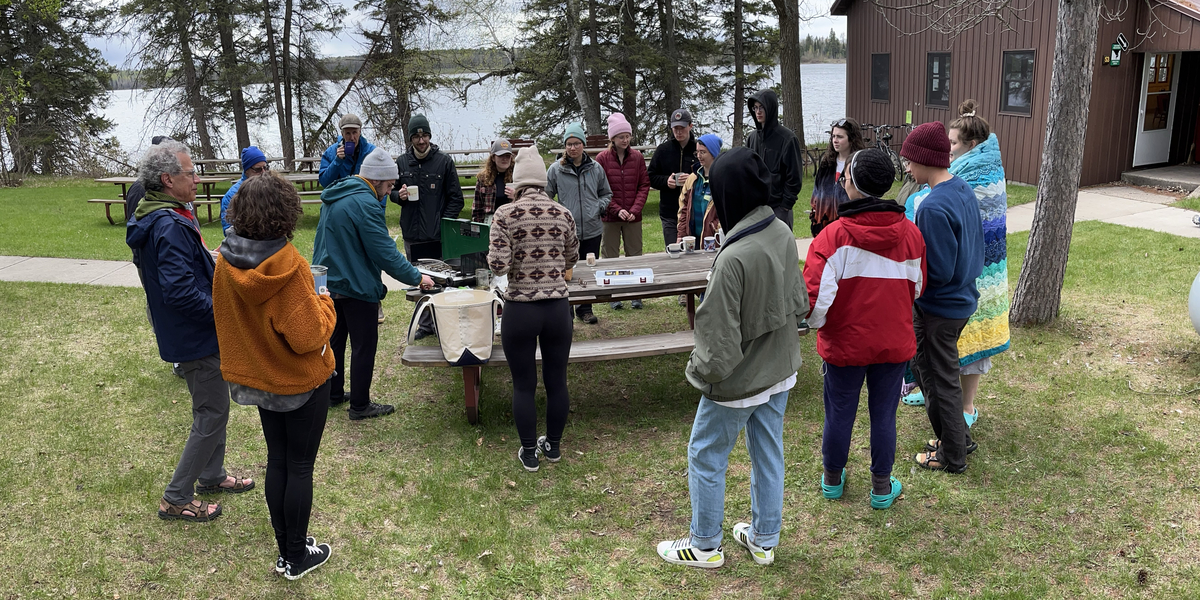
Taking a field biology course is an immersive experience. Wading into lakes, maneuvering through bogs and navigating fallen trees on forays into the forest are all par for the course. But what about when students aren’t in the field, in class or working on assignments?
For field biology students at Itasca Biological Station and Laboratories (IBSL), the engagement doesn’t stop when the day’s lecture or foray into the field is over. The experience continues in the evenings and on the weekends in informal ways. They participate in seminars given by instructors and visiting researchers, share their own research, interact with volunteer guides and engage in group activities, like bike rides through the park or wildflower hikes with volunteer guides.
“Students are in class for a big chunk of the day,” says IBSL Associate Director Emily Schilling. “But we also set out to create an environment where students can stay engaged outside the formal curriculum. Sometimes that looks like students sitting at the picnic tables talking about what they collected that day. Sometimes it’s an excursion with the directors in canoes paddling down the Mississippi headwaters. A lot of students soak up more in a few weeks than they would in a typical classroom setting over the course of a semester.”
Schilling notes that the living-learning community approach also helps in other ways. While some field biology students arrive well-versed in the ways of the wilderness, those who are not can feel unmoored. “We’re trying to make it more welcoming and accessible, not just to kids who grew up going to the Boundary Waters or camping every summer and are comfortable exploring the state park, but to anyone who wants to have that experience. The living-learning community model helps us do that.”
About the guides
For the past few years, a small group of volunteers has been on hand to engage with field biology students. Dubbed “guides,” they spend time with the students and serve as a resource. They share their insights, lead activities and engage with students in an informal way at mealtimes. The guides bring a lifetime of experience to the task. Last year, Alan Holt (retired scientist, Nature Conservancy), Corby Kistler (retired scientist, USDA), Jim Sparks (retired scientist, Bureau of Land Management), and Sue Wick (retired professor, College of Biological Sciences) served as guides.
Wick made the trip to Itasca many times for Nature of Life, the College’s one-of-akind program for incoming students. She enjoys the more relaxed role of guide and sees the value in the concept. “The guides all come from different professional scientific backgrounds,” she says “and are able to provide different perspectives about career paths and the natural world to the students.” — Stephanie Xenos